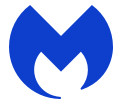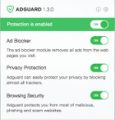What is FlexibleSearch
FlexibleSearch is an adware program. Adware is considered by many to be synonymous with ‘malware’. It’s a malicious application that serves undesired advertisements to computer users. Some examples include pop-up ads, various offers and deals or unclosable windows. Adware software can be installed onto your MAC system via infected web-sites, when you open email attachments, anytime you download and install free programs.
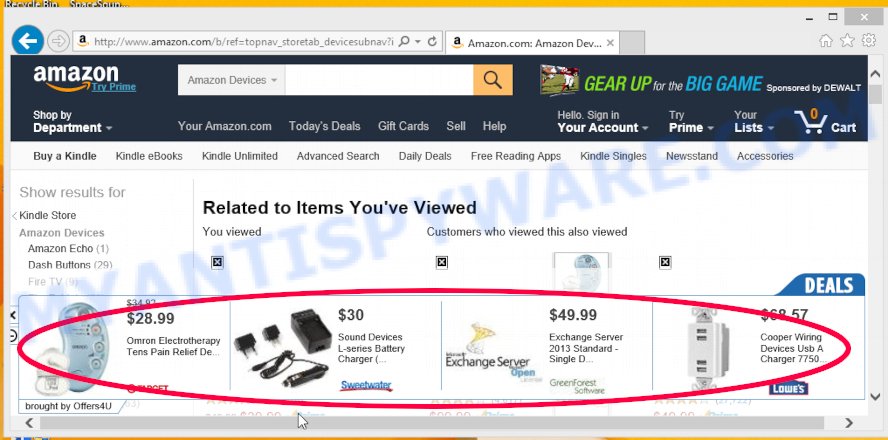
Unwanted ads
Another reason why you need to remove FlexibleSearch is its online data-tracking activity. it can analyze the location and which Internet web sites you visit, and then present advertisements to the types of content, goods or services featured there. Adware authors can gather and sell your surfing information and behavior to third parties.
Take a deep breath. Learn everything you should know about FlexibleSearch removal, how to get rid of intrusive advertisements from your web browser and machine. Find the best free adware and malware removal utilities here!
How does FlexibleSearch get on your machine
The majority of adware software gets on MAC computers along with free software or even paid applications which users can easily download online. The installers of such software, most commonly, clearly show that they will install bundled software. The option is given to users to stop the installation of any bundled software. So, in order to avoid the installation of any adware: read all disclaimers and install screens very carefully, select only Custom or Advanced setup option and uncheck all third-party applications in which you are unsure.
Threat Summary
| Name | FlexibleSearch, FlexibleSearch 1.0 app |
| Type | adware, PUP (potentially unwanted program), Mac virus, Mac malware |
| Detection Names | Adware.MAC.Generic, OSX.Trojan.Gen, Trojan-Downloader.OSX.Adload, MacOS.Agent-MT, ApplicUnwnt, Adware/Adload!OSX, Osx.Adware.Cimpli and Program:MacOS/Vigram.A |
| Distribution | Free software installers, fake update tools, dubious popup ads and torrent downloads |
| Symptoms | Every time you perform an Internet search, your web-browser is redirected to another web page, unwanted advertising links appear on webpages that you are visiting, new entries appear in your Applications folder, unexpected browser addons or toolbars keep coming back, your browser search engine has modified without your permission, low ping but slow Internet. |
| Removal | FlexibleSearch removal guide |
How to Remove FlexibleSearch (removal steps)
The answer is right here on this web page. We have put together simplicity and efficiency. It will help you easily to clean your computer of FlexibleSearch . Moreover, you can choose manual or automatic removal solution. If you are familiar with the machine then use manual removal, otherwise run the free anti malware utility developed specifically to delete adware. Of course, you can combine both methods. Read it once, after doing so, please bookmark this page (or open it on your smartphone) as you may need to exit your web browser or reboot your computer.
To remove FlexibleSearch, use the steps below:
- Remove profiles created by FlexibleSearch
- Remove FlexibleSearch related software through the Finder
- Remove FlexibleSearch related files and folders
- Scan your Mac with MalwareBytes
- Remove FlexibleSearch from Safari, Chrome, Firefox
- How to stay safe online
Remove profiles created by FlexibleSearch
FlexibleSearch can install a configuration profile on the Mac system to block changes made to the browser settings. Therefore, you need to open system preferences, find and delete the profile installed by the adware software.
Click the System Preferences icon ( ![]() ) in the Dock, or choose Apple menu (
) in the Dock, or choose Apple menu ( ![]() ) > System Preferences.
) > System Preferences.
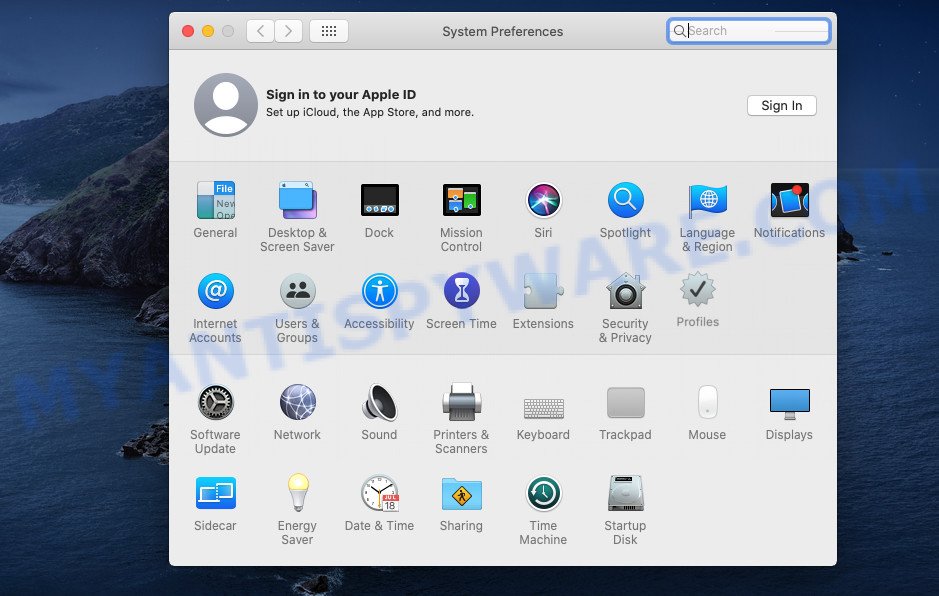
In System Preferences, click Profiles, then select a profile related to FlexibleSearch.
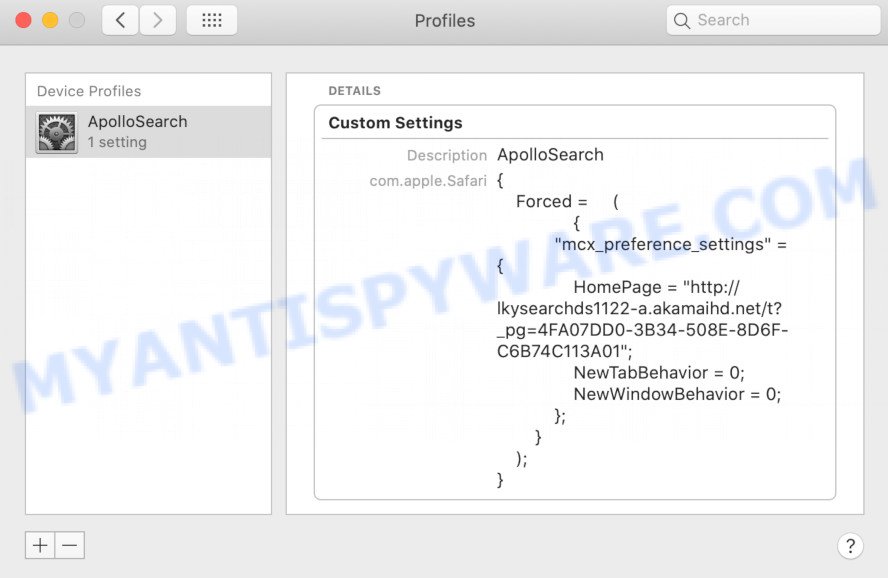
Click the minus button ( – ) located at the bottom-left of the Profiles screen to remove the profile.
Note: if you do not see Profiles in the System Preferences, that means there are no profiles installed on your Mac device, which is normal.
Remove FlexibleSearch related software through the Finder
Check the list of installed programs on your Mac and uninstall all unknown and recently installed applications. If you see an unknown program with incorrect spelling or varying capital letters, it have most likely been installed by malicious software and you should clean it off first with malware removal tool like MalwareBytes Anti-Malware.
Open Finder and click “Applications”.
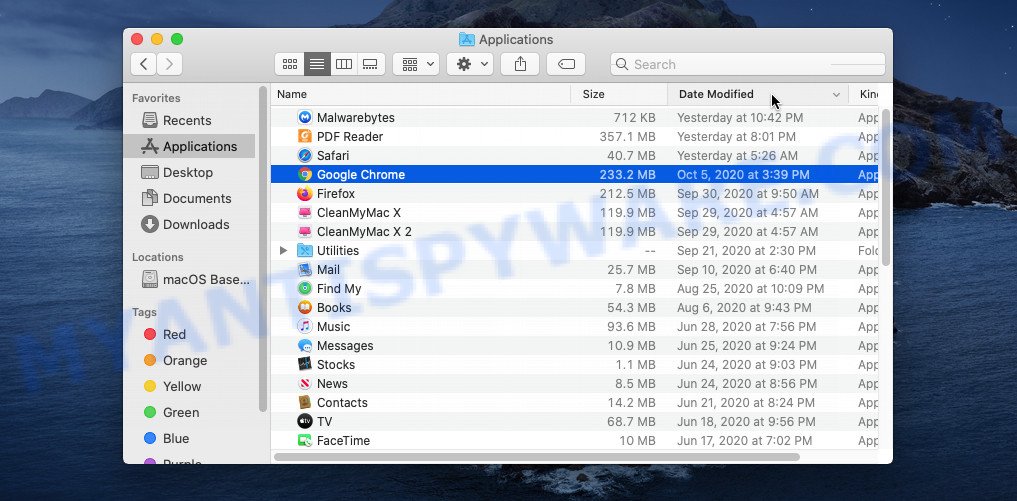
Very carefully look around the entire list of applications installed on your MAC OS. Most probably, one of them is the FlexibleSearch adware. Once you have found a dubious, unwanted or unused application, right click to it and choose “Move to Trash”. Another way is drag the program from the Applications folder to the Trash.
Don’t forget, select Finder -> “Empty Trash”.
Remove FlexibleSearch related files and folders
Now you need to try to find FlexibleSearch related files and folders, and then delete them manually. You need to look for these files in certain directories. To quickly open them, we recommend using the “Go to Folder…” command.
FlexibleSearch creates several files, these files must be found and removed. Below is a list of files associated with this unwanted program.
- /Library/LaunchDaemons/com.FlexibleSearch.system.plist
- ~/Library/LaunchAgents/com.FlexibleSearch.service.plist
- /Library/Application Support/.(RANDOM)/System/com.FlexibleSearch.system
- ~/Library/Application Support/.(RANDOM)/Services/com.FlexibleSearch.service.app
Some files created by FlexibleSearch are hidden from the user. To find and delete them, you need to enable “show hidden files”. To do this, use the shortcut CMD + SHIFT + . Press once to show hidden files and again to hide them. There is another way. Click Finder -> Applications -> Utilities -> Terminal. In Terminal, paste the following text: defaults write com.apple.finder AppleShowAllFiles YES

Press Enter. Hold the ‘Option/alt’ key, then right click on the Finder icon in the dock and click Relaunch.
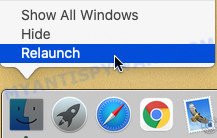
Click on the Finder icon. From the menu bar, select Go and click “Go to Folder…”. As a result, a small window opens that allows you to quickly open a specific directory.

Check for FlexibleSearch generated files in the /Library/LaunchAgents folder

In the “Go to Folder…” window, type the following text and press Go:
/Library/LaunchAgents
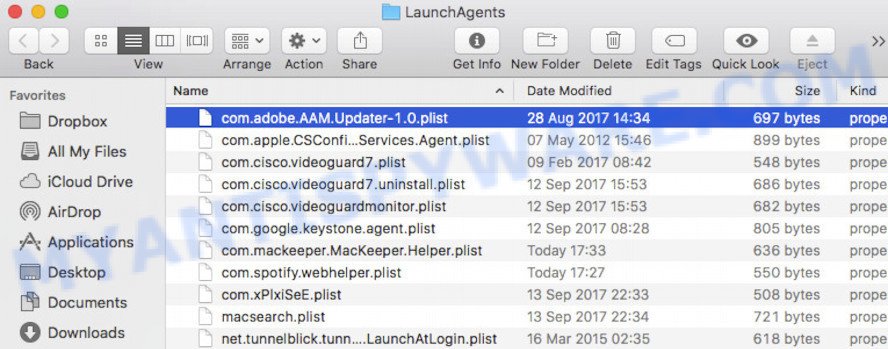
This will open the contents of the “/Library/LaunchAgents” folder. Look carefully at it and pay special attention to recently created files, as well as files that have a suspicious name. Move all suspicious files to the Trash. A few examples of files: com.FlexibleSearch.service.plist, search.plist, com.google.defaultsearch.plist, , com.machelper.plist, macsearch.plist, com.net-preferences.plist and installapp.plist. Most often, browser hijackers, potentially unwanted programs and adware create several files with similar names.
Check for FlexibleSearch generated files in the /Library/Application Support folder

In the “Go to Folder…” window, type the following text and press Go:
/Library/Application Support
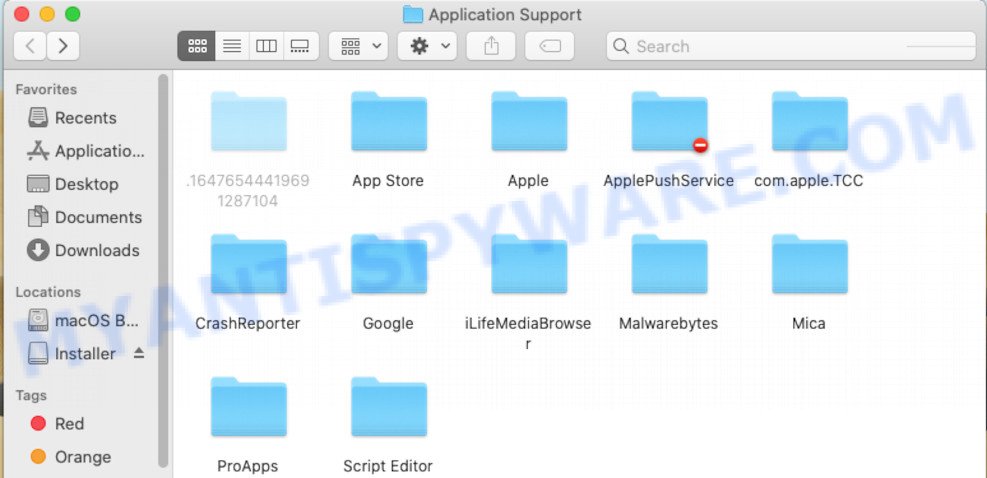
This will open the contents of the “Application Support” folder. Look carefully at its contents, pay special attention to recently added/changed folders and files. Check the contents of suspicious folders, if there is a file with a name similar to com.FlexibleSearch.system, then this folder must be deleted. Move all suspicious folders and files to the Trash.
Check for FlexibleSearch generated files in the “~/Library/LaunchAgents” folder

In the “Go to Folder…” window, type the following text and press Go:
~/Library/LaunchAgents

Proceed in the same way as with the “/Library/LaunchAgents” and “/Library/Application Support” folders. Look for suspicious and recently added files. Move all suspicious files to the Trash.
Check for FlexibleSearch generated files in the /Library/LaunchDaemons folder
In the “Go to Folder…” window, type the following text and press Go:
/Library/LaunchDaemons

Carefully browse the entire list of files and pay special attention to recently created files, as well as files that have a suspicious name. Move all suspicious files to the Trash. A few examples of files to be deleted: com.macsearch.system.plist, com.search.system.plist, com.installapp.system.plist, com.machelper.system.plist and com.FlexibleSearch.system.plist. In most cases, adware software, potentially unwanted programs and browser hijackers create several files with similar names.
Scan your Mac with MalwareBytes
If you carefully followed the previous steps, then you should be able to get rid of FlexibleSearch. Of course, very often browser hijackers, adware and PUPs hides on a Mac, disguising itself as legitimate apps and files. Therefore, in some cases, it is difficult for an inexperienced user to decide whether a particular file is part of adware software, browser hijackers and PUPs. Therefore, we suggest you to run MalwareBytes AntiMalware to scan the Mac.
Installing the MalwareBytes Anti Malware (MBAM) is simple. First you’ll need to download MalwareBytes AntiMalware (MBAM) on your MS Windows Desktop by clicking on the link below.
21021 downloads
Author: Malwarebytes
Category: Security tools
Update: September 10, 2020
When the downloading process is done, close all software and windows on your MAC system. Open a directory in which you saved it. Run the saved file and follow the prompts.
Once setup is done, you will see window as displayed in the figure below.
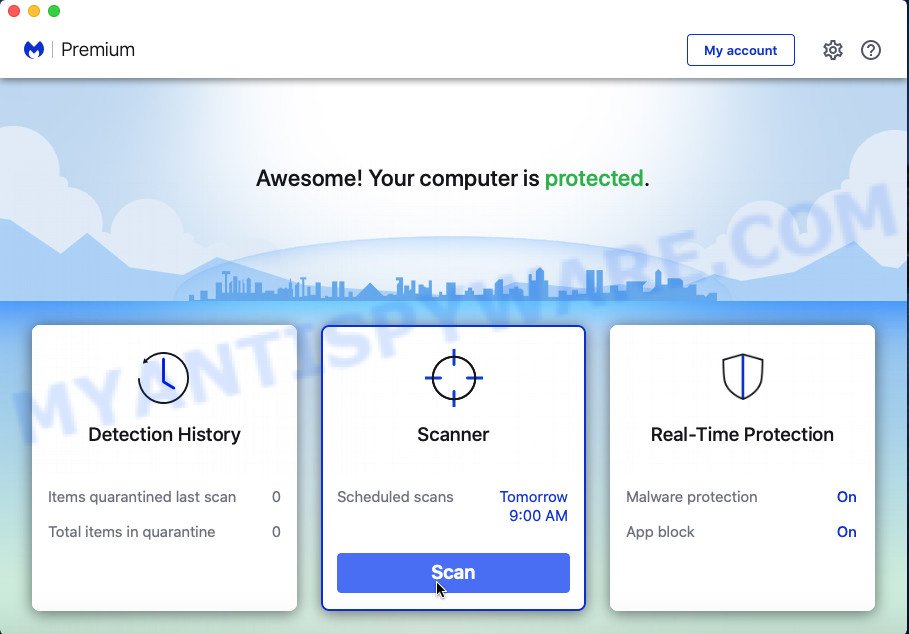
Now click the “Scan” button to begin scanning your MAC OS for the FlexibleSearch . While the MalwareBytes Free program is scanning, you may see count of objects it has identified as threat.
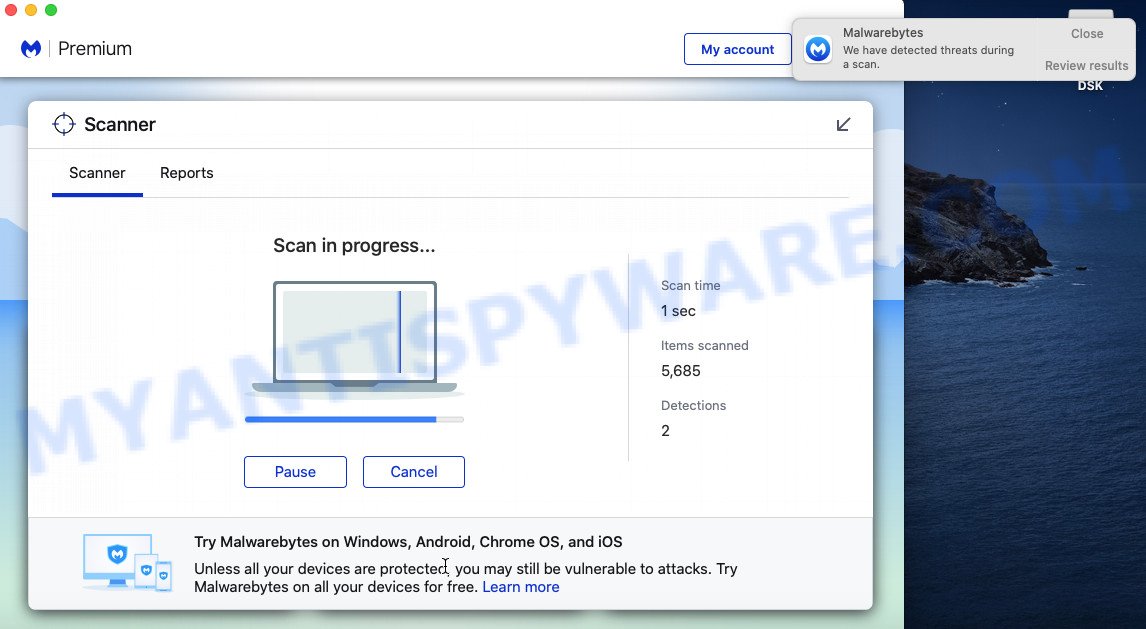
After MalwareBytes Anti-Malware (MBAM) has finished scanning, MalwareBytes Anti-Malware (MBAM) will produce a list of unwanted programs and adware software. Make sure to check mark the items which are unsafe and then press “Quarantine” button.
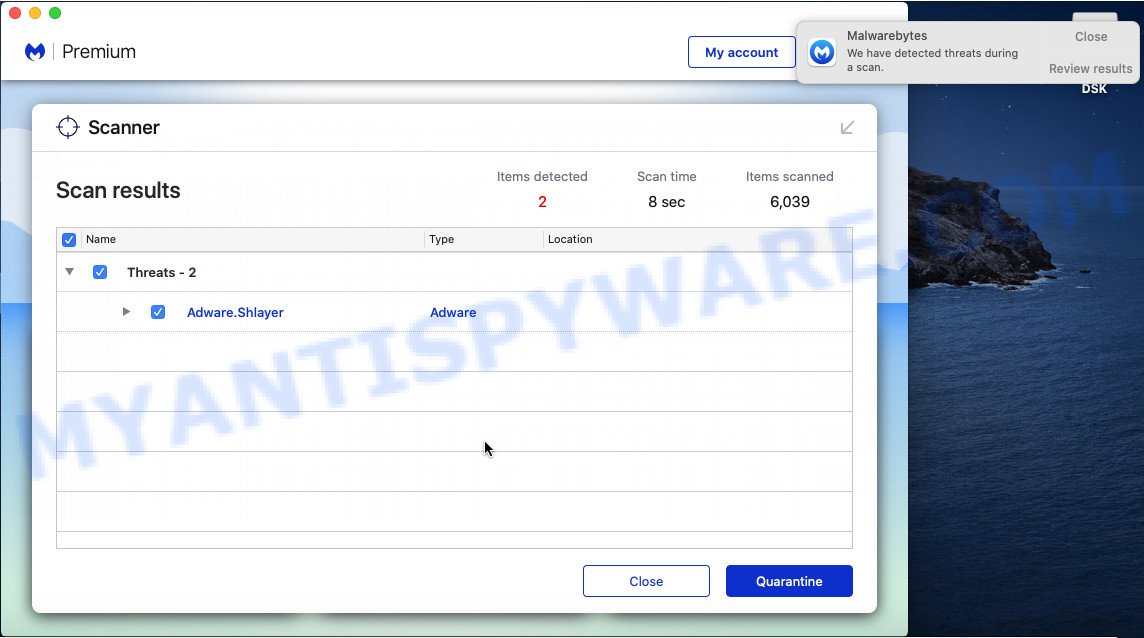
The Malwarebytes will now get rid of FlexibleSearch adware software.
Remove FlexibleSearch from Safari, Chrome, Firefox
This step will show you how to remove malicious addons. This can delete FlexibleSearch and fix some browsing problems, especially after adware software infection.
You can also try to get rid of FlexibleSearch adware by reset Google Chrome settings. |
If you are still experiencing issues with FlexibleSearch removal, you need to reset Firefox browser. |
|
How to stay safe online
Use ad-blocking program such as AdGuard in order to stop advertisements, malvertisements, pop-ups and online trackers, avoid having to install malicious and adware browser plug-ins and add-ons that affect your MAC system performance and impact your MAC security. Browse the World Wide Web anonymously and stay safe online!
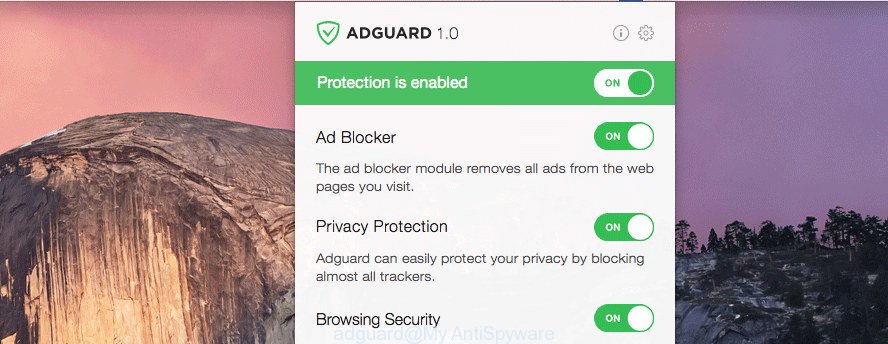
Visit the following page to download AdGuard.
3782 downloads
Author: © Adguard
Category: Security tools
Update: January 17, 2018
After downloading is done, launch the downloaded file. You will see the “Setup Wizard” screen. Follow the prompts.
Each time, when you start your MAC, AdGuard will launch automatically and stop intrusive popups, block malicious and misleading web pages.
Finish words
Once you’ve finished the steps outlined above, your MAC system should be clean from this adware and other malicious software. The Mozilla Firefox, Chrome and Safari will no longer display any unwanted ads when you surf the Net. Unfortunately, if the steps does not help you, then you have caught a new adware, and then the best way – ask for help.
Please create a new question by using the “Ask Question” button in the Questions and Answers. Try to give us some details about your problems, so we can try to help you more accurately. Wait for one of our trained “Security Team” or Site Administrator to provide you with knowledgeable assistance tailored to your problem with the FlexibleSearch adware.
